Why you can trust Tom's Hardware
Gigabyte's packaging for the Eagle doesn't really convey the fact that you're getting a barebones reference card. The card itself looks like the Eagle logo should light up in blue, but it doesn't. It's basically the same PCB design as the higher spec Gigabyte cards, but without any RGB or factory overclock. The three fans measure about 78mm in diameter (Gigabyte says 80mm, but our measuring tape told a different story), and unlike higher end fans, there's no integrated rim. There's certainly room for a slightly larger fan, and the impact of using smaller fans can be seen in both the cooling and noise levels we'll get to later.
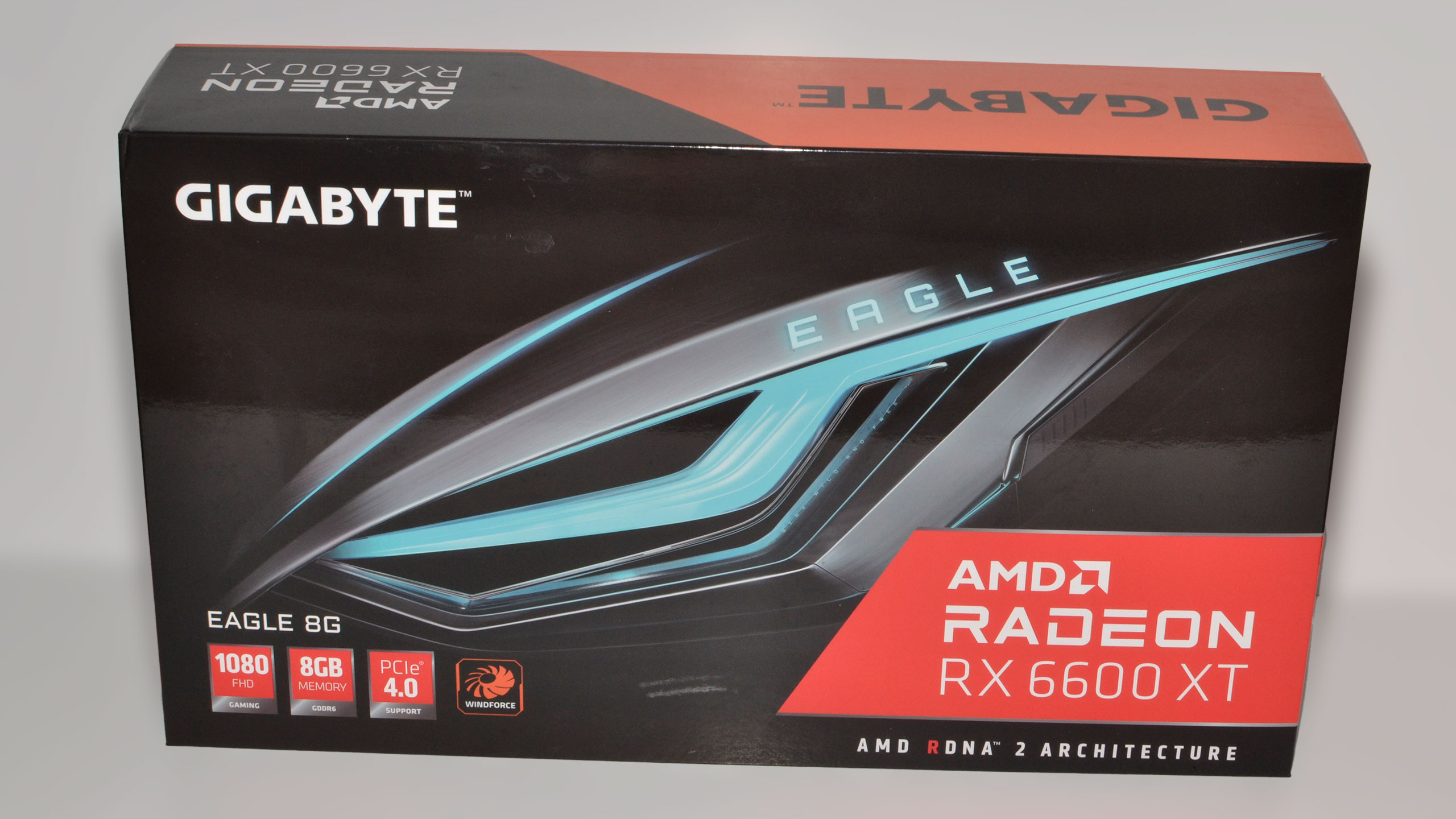
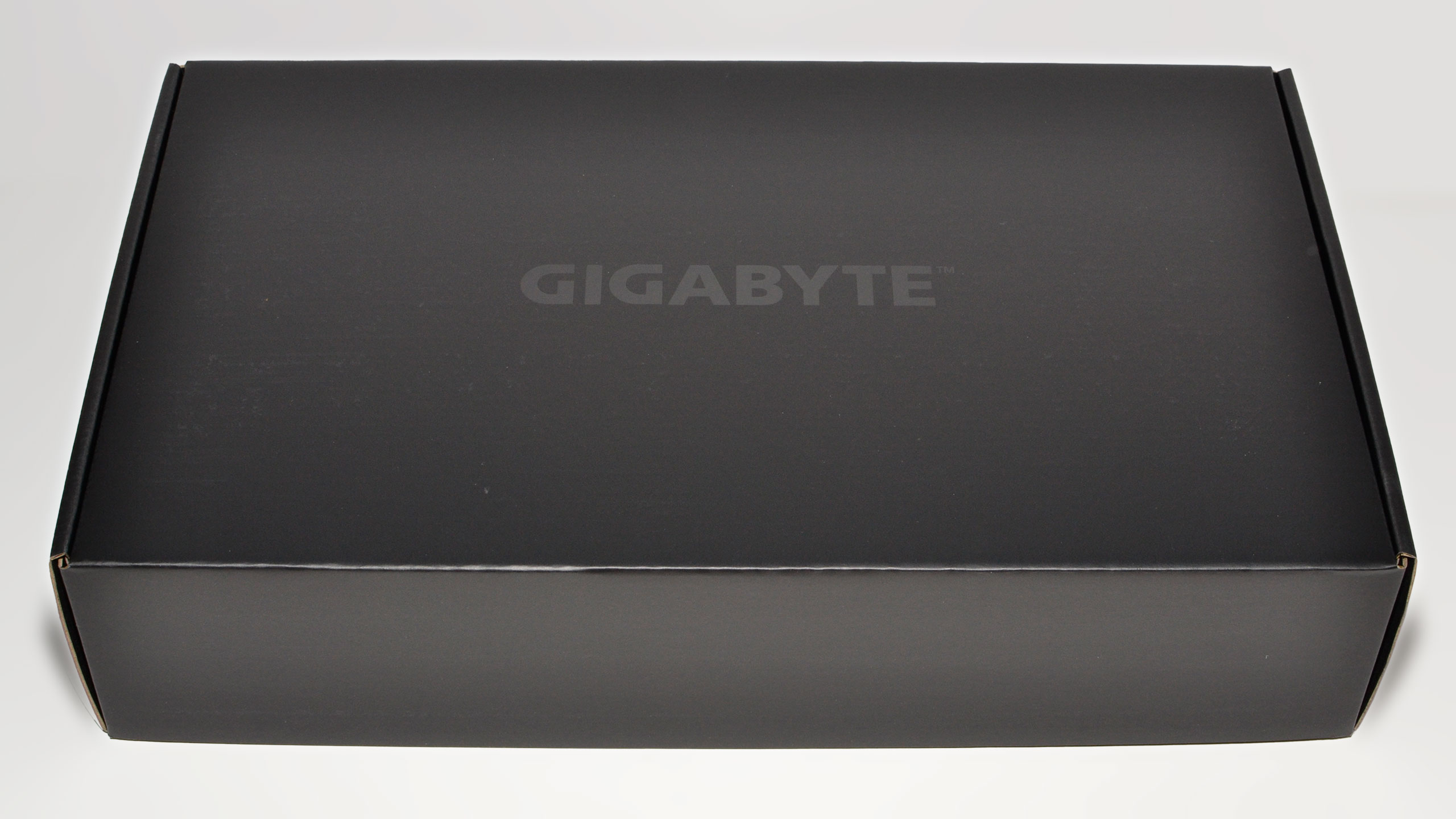
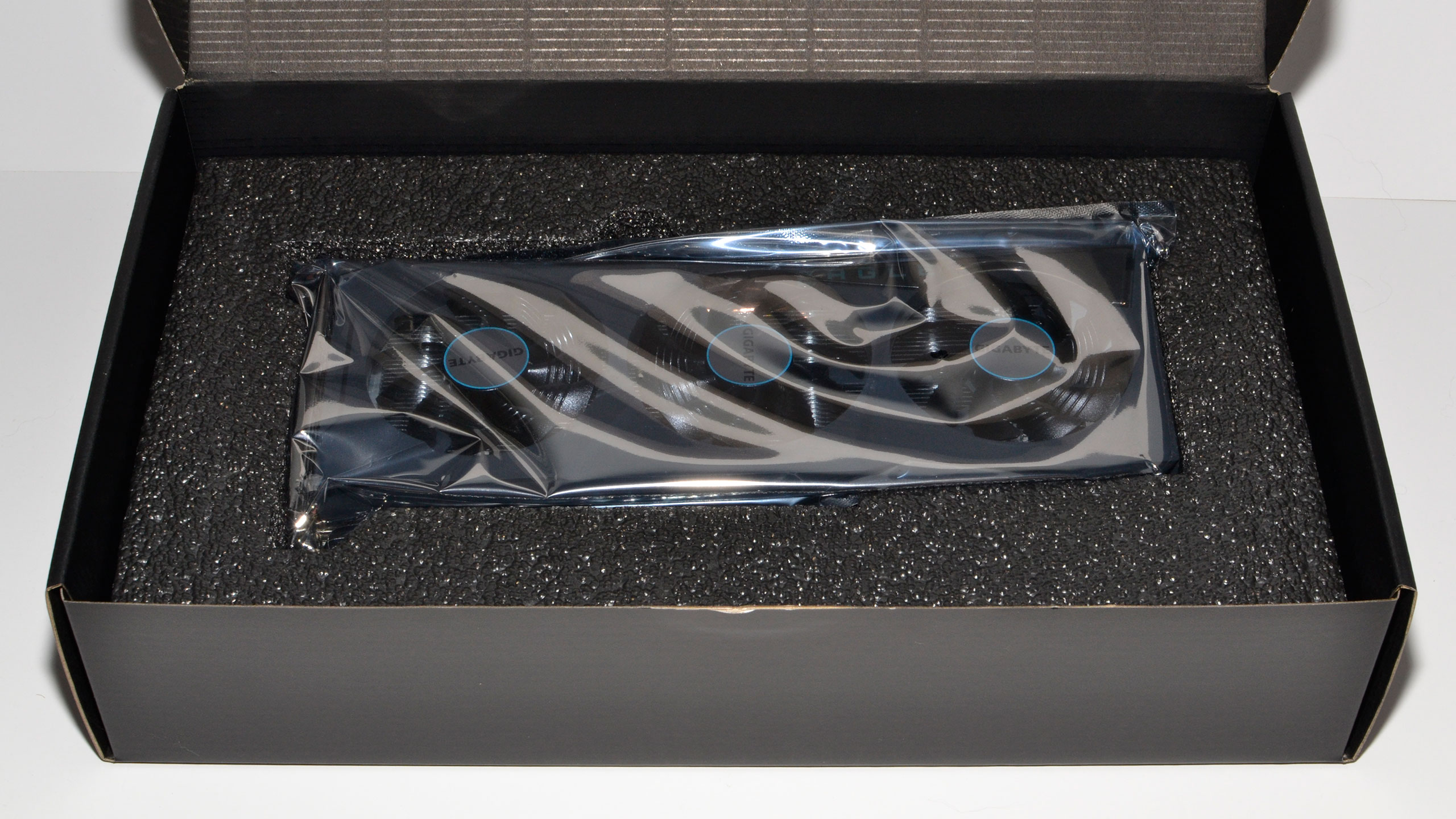
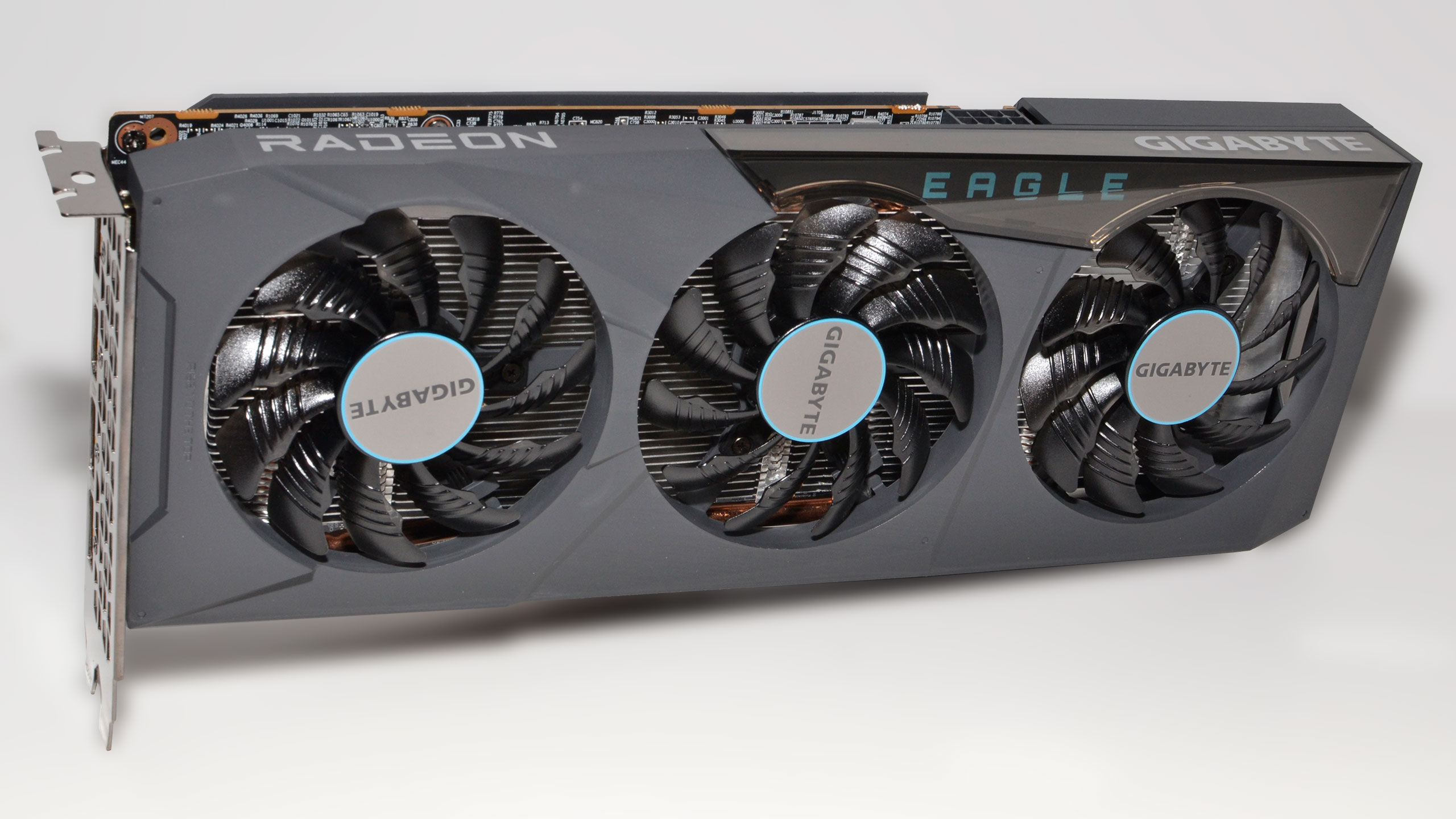
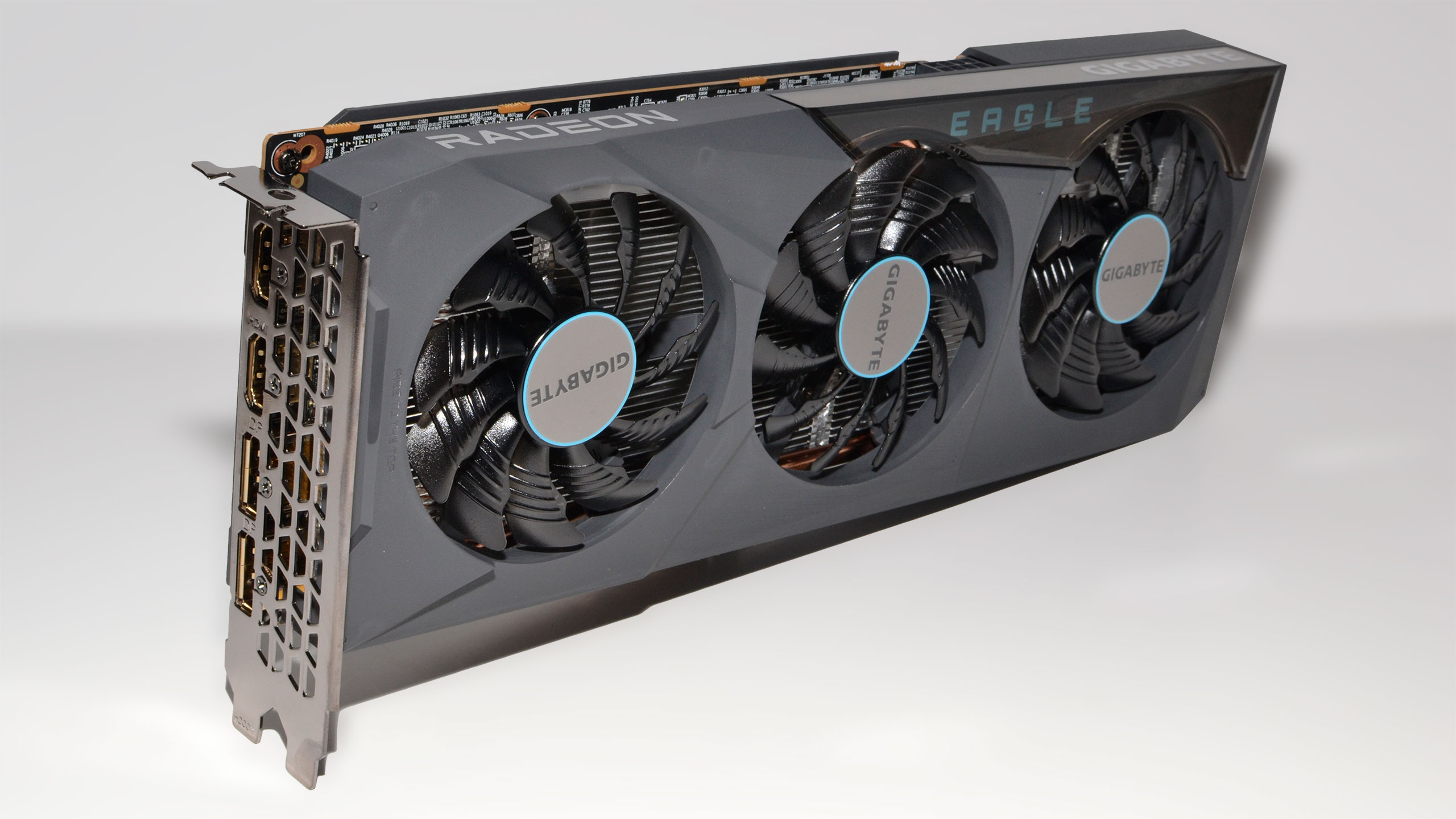
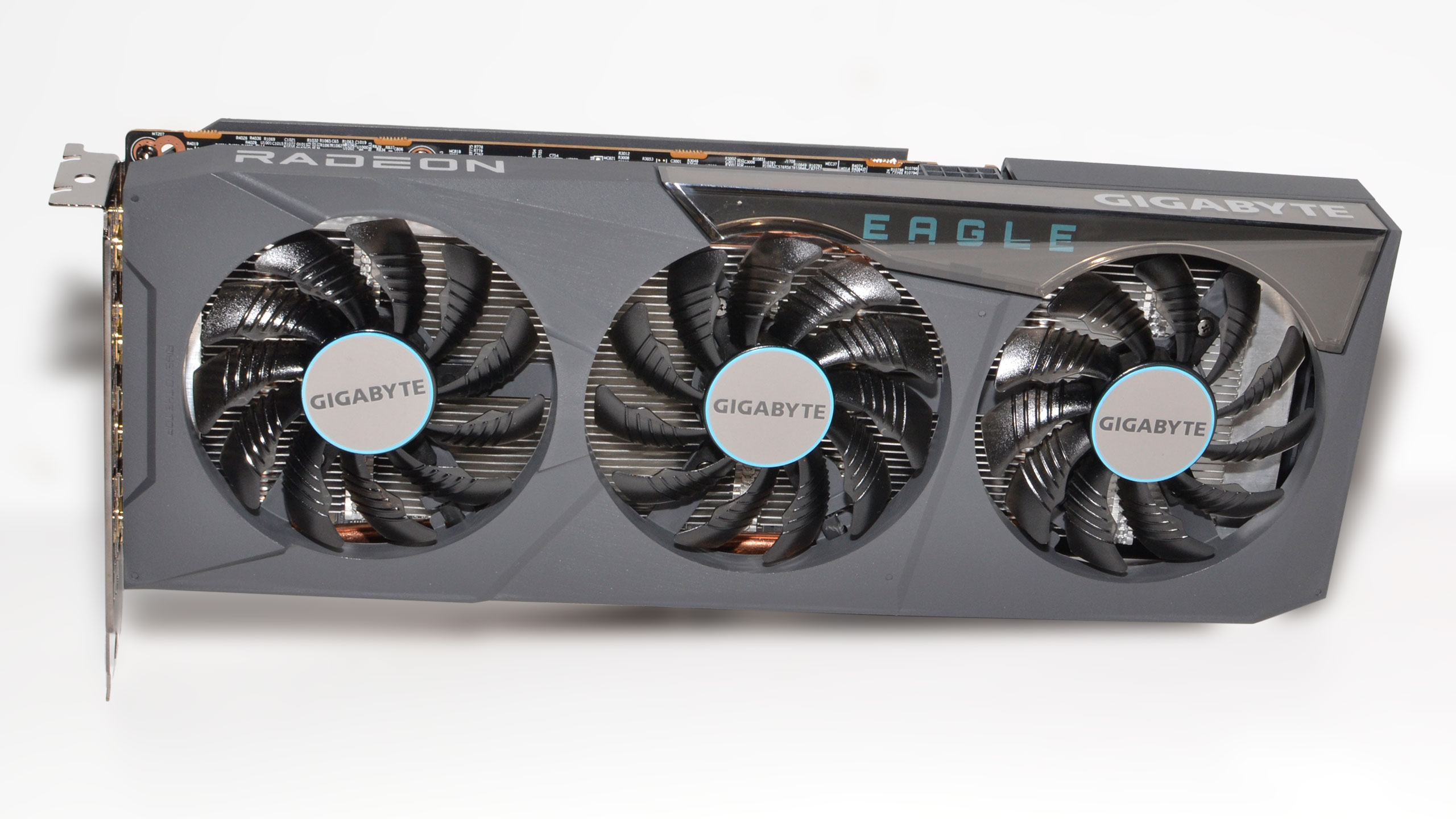



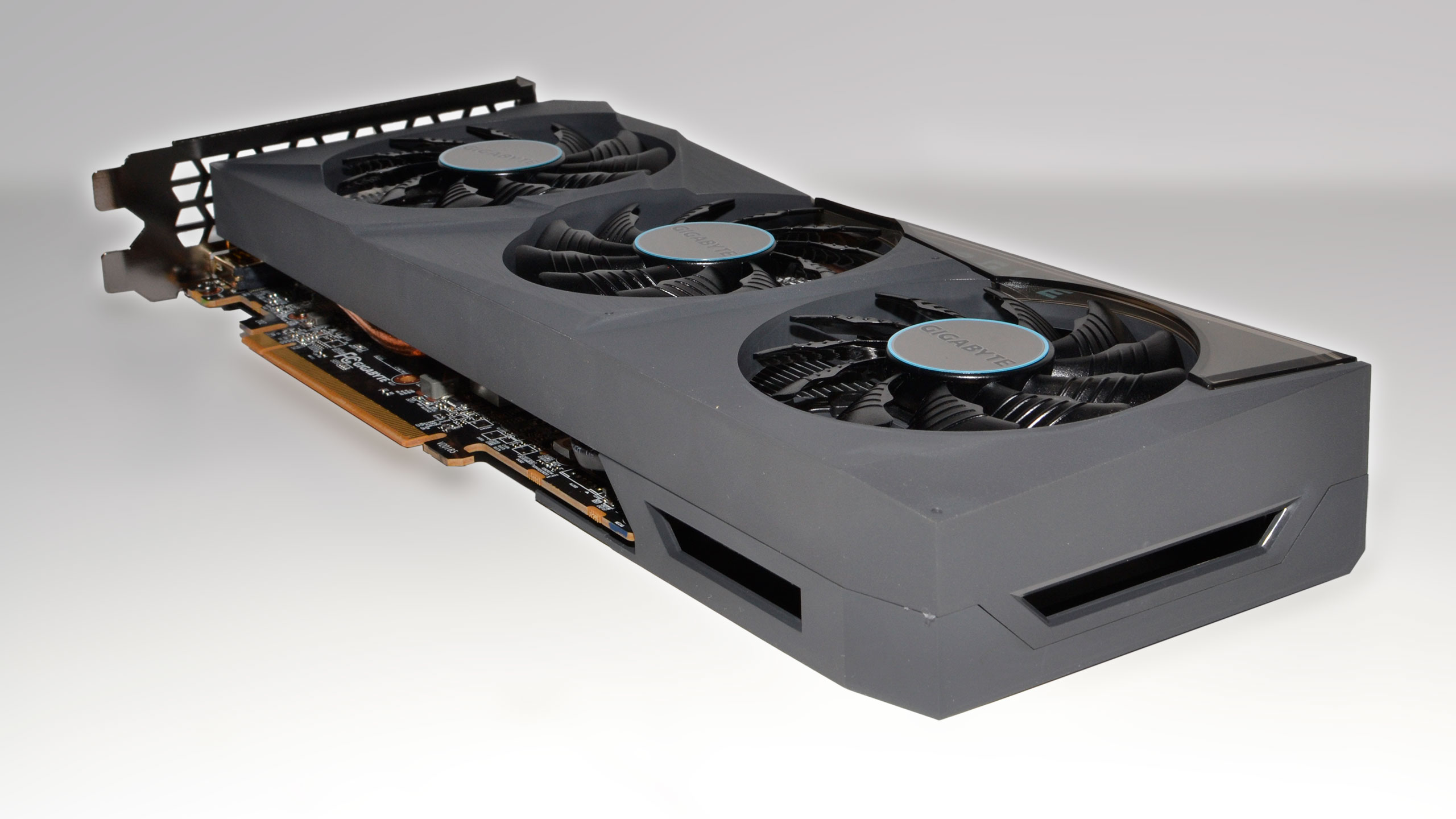
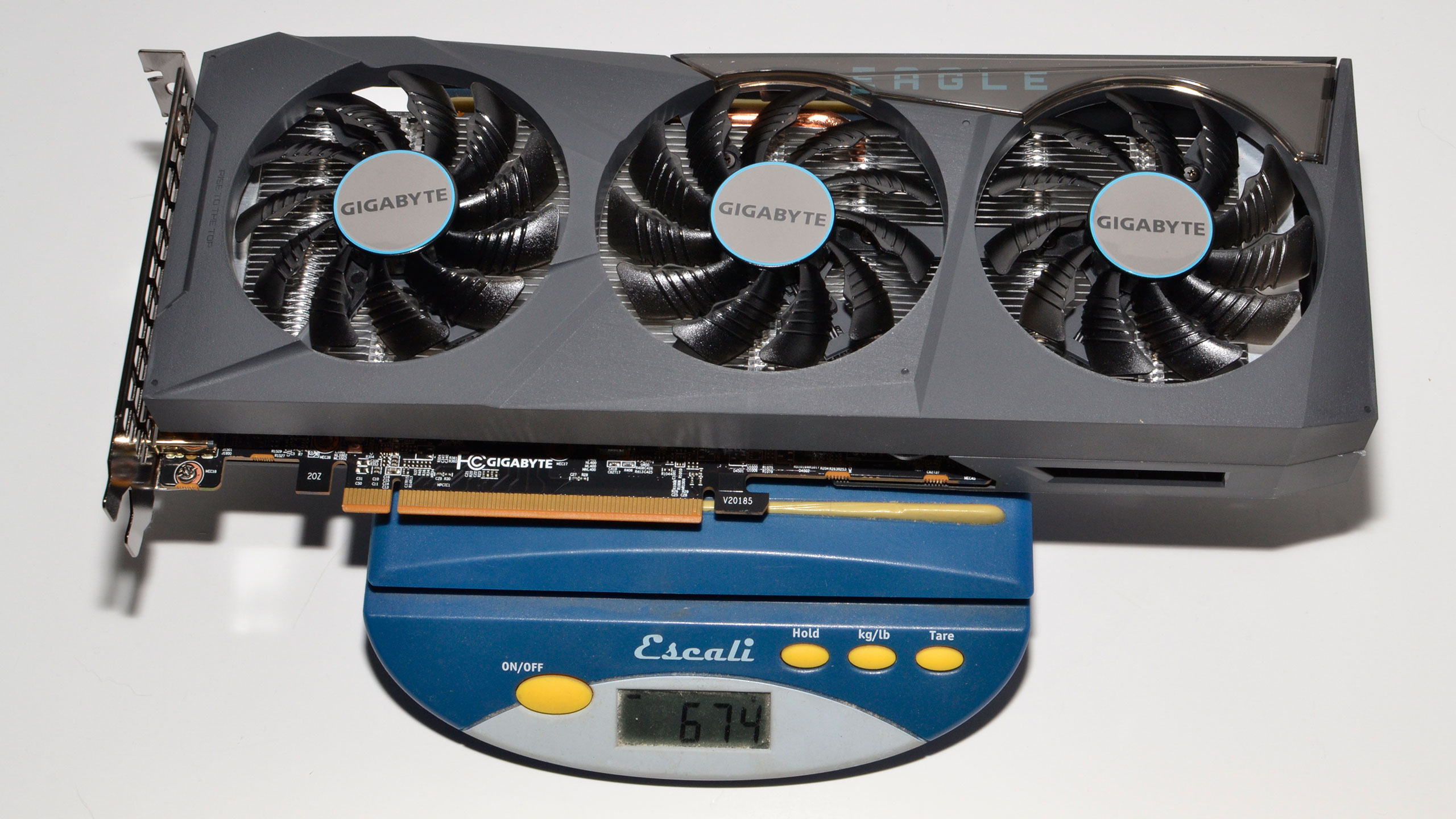
The Eagle measures 289 x 112 x 38mm and tips the scales at 674g (those are both our measurements), which is longer but shorter and slightly thinner than the Sapphire Pulse. The ASRock Phantom by comparison weighs 898g and measures 306 x 131 x 47mm, easily the largest of the three RX 6600 XT cards. If you have a sufficiently-long mini-ITX case, the Gigabyte Eagle might be a good fit, but again, check the cooling and noise results later in the review as you'll see it doesn't stack up that well against the other cards.
About the only real differentiating factor between the Eagle and the other cards is that it includes two HDMI 2.1 ports. While nearly all gaming monitors still tend to prefer DisplayPort 1.4 — it can do 4K at 144 Hz with DSC, and FreeSync / adaptive sync is more commonly supported over DP — HDMI 2.1 technically offers superior specs. You can read more about DisplayPort vs. HDMI, but either one should be sufficient for typical gaming use, particularly on a 1080p display, AMD's target for the RX 6600 XT. If you want to use the card with a TV, dual HDMI 2.1 ports might be more useful, but then you'd really need to run a multi-monitor setup with TVs to need both ports, as finding any gaming monitors with HDMI 2.1 support remains difficult.
MORE: Best Graphics Cards
MORE: GPU Benchmarks and Hierarchy
MORE: All Graphics Content
Get Tom's Hardware's best news and in-depth reviews, straight to your inbox.
Current page: Design and Features of Gigabyte Radeon RX 6600 XT Eagle
Prev Page Specs of Gigabyte Radeon RX 6600 XT Eagle Next Page Gaming Performance of Gigabyte Radeon RX 6600 XT Eagle
Jarred Walton is a senior editor at Tom's Hardware focusing on everything GPU. He has been working as a tech journalist since 2004, writing for AnandTech, Maximum PC, and PC Gamer. From the first S3 Virge '3D decelerators' to today's GPUs, Jarred keeps up with all the latest graphics trends and is the one to ask about game performance.
-
watzupken I am glad at least it doesn't explode. In any case, I feel the cutback is to be expected given that the Eagle series is Gigabyte's entry level model.Reply -
artk2219 Replywatzupken said:I am glad at least it doesn't explode. In any case, I feel the cutback is to be expected given that the Eagle series is Gigabyte's entry level model.
I agree some compromises are expected with entry level models, but the crazy thing is they didn't have to. I can't see the build cost on that longer triple fan model being any cheaper than some of the shorter dual fans models that are available. Eh who knows maybe they had a bunch of those fans, or could source them super cheaply, still doesn't explain the long heatsink or extra plastic etc on the card. -
Sleepy_Hollowed Something about JD and Turk screaming “Eagle”.Reply
in all seriousness, wow, this is truly budget in every sense of the word, it could be worse, but wow.
reminds me of my first blower card, GTX 660, and how loud and hot it ran (this was an oem design on an Alienware system). -
Findecanor Reply
Every large computer brand produces faulty hardware or software sooner or later.watzupken said:I am glad at least it doesn't explode.
The difference, which matters is in how they treat the issue — and the customers affected by it.
This was Gigabyte's biggest failure with the PSU. -
watzupken Reply
This I totally agree. I am not upset with failing products from Gigabyte. I am upset with the way they handle the issue. And considering this may be a potential fire hazard, or may end up killing something in the computer (where warranty gets void), it is highly irresponsible of Gigabyte to delay a recall and try to blame it on reviewers. Worst of all, they are bundling these PSU with GPUs despite knowing almost a year back of the issue. This just shows they don't care. Anyway, no more Gigabyte products for me after 2 decades of supporting them by buying their motherboards.Findecanor said:Every large computer brand produces faulty hardware or software sooner or later.
The difference, which matters is in how they treat the issue — and the customers affected by it.
This was Gigabyte's biggest failure with the PSU.
Back to the topic of this GPU.